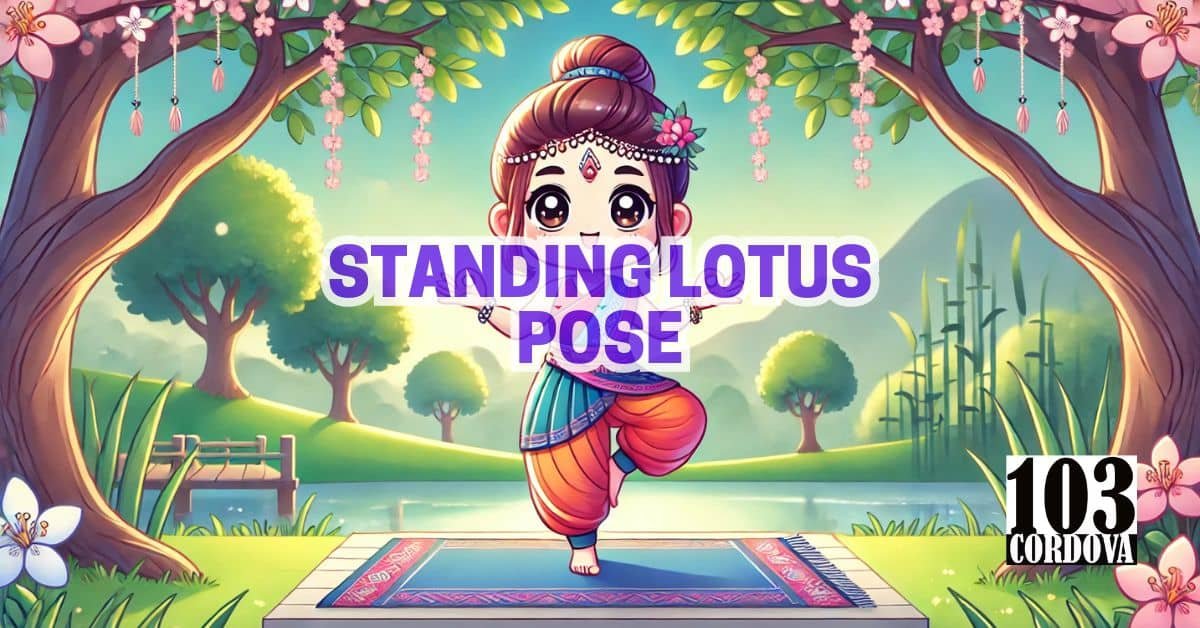The Standing Lotus Pose uniquely tests your body’s strength and your mind’s focus with its demanding balance and precise leg positioning.
Unlike simpler yoga poses, this posture involves standing steadily on one leg while folding the other neatly onto your thigh.
It requires exceptional flexibility, concentration, and calmness, presenting a true test even for experienced practitioners.
Mastering this complex position offers a rewarding sense of achievement, strengthening both your body and mental resilience.
Regular practice enhances confidence, discipline, and personal growth.
1. Demands Exceptional Hip Flexibility
Successfully doing the Standing Lotus Pose requires your hips to rotate outward significantly, placing your foot high onto your opposite thigh.
This movement pushes the hips beyond everyday activities, stretching muscles and ligaments deeply.
If your hips are stiff, you might struggle with this pose initially, experiencing discomfort or tension.
Improving flexibility through consistent stretches and hip-opening exercises like butterfly or pigeon poses makes this posture more accessible.
Developing hip flexibility safely prevents discomfort and protects against injury.
🧘 Why the Benefits of Cork Yoga Blocks Outshine Foam Alternatives
2. Requires Strong Knee and Ankle Stability
The Standing Lotus Pose relies significantly on your standing leg’s knee and ankle, which bear your full weight.
Maintaining balance requires these joints to be strong and steady, preventing unwanted movements or strain.
Weakness or instability can result in shakiness, reducing your ability to stay in the pose comfortably or safely.
Regular exercises like standing balances or leg strengthening routines enhance your joint stability.
Building knee and ankle strength enables you to perform the pose securely and confidently.
🧘 Why Mindfulness is Essential for Deepening Your Yoga Practice
3. Challenges Balance and Core Strength
Balance is essential in the Standing Lotus Pose since your body’s entire weight rests on a single foot.
Your core muscles, including the abdomen and lower back, activate continuously to keep you steady and upright.
Keeping your balance becomes especially difficult as you lift and position the folded leg on your thigh.
Strengthening your core through exercises such as planks or yoga balances significantly aids in maintaining stability.
Improved balance and core strength result in a more controlled, graceful posture.
🧘 Can Hatha Alignment Yoga Relieve Chronic Pain?
4. Requires Strong Mental Concentration
Successfully holding the Standing Lotus Pose involves sustained mental focus.
Losing concentration can quickly disrupt balance, causing you to fall or wobble.
It’s essential to remain mindful of your breathing, posture, and the alignment of your body parts.
Regular meditation or breathing exercises can sharpen your concentration skills, making it easier to stay focused during the pose.
Strengthening mental focus through practice enhances both yoga sessions and your overall attention span in daily activities.
🧘 What Makes the Hatha Yoga Diet Different from Other Yogic Diets?
5. Involves Risk of Injury Without Proper Preparation
Attempting the Standing Lotus Pose without proper preparation can easily result in injuries.
Forcing your leg into position without gentle stretching may strain or damage muscles and ligaments in your hips, knees, or ankles.
The unusual alignment and pressure on joints can cause pain, inflammation, or more serious harm if done incorrectly.
Performing warm-up exercises and stretches before trying the pose reduces injury risk.
Adequate preparation helps your body safely adjust to the demands of this challenging posture.
🧘 Can the Principles Of Hatha Yoga Be Applied to Daily Life?
6. Highlights the Importance of Proper Alignment
Proper alignment in the Standing Lotus Pose ensures your weight is evenly distributed, reducing unnecessary strain on joints.
Misaligned posture, like leaning too far to one side or placing your foot incorrectly, can lead to imbalance or discomfort.
Practicing with proper alignment involves careful attention to your stance, ensuring your body is upright and stable.
Using mirrors or receiving instruction from yoga teachers helps maintain accurate alignment.
Correct alignment supports your physical safety and improves overall yoga performance.
🧘 How Pranayama In Hatha Yoga Pradipika Guides the Path to Self-Realization
7. Requires Awareness of Individual Anatomical Limits
The Standing Lotus Pose clearly illustrates that each person has unique anatomical limits.
Recognizing and respecting your body’s limitations prevents unnecessary strain or injury from forcing beyond what feels comfortable.
Listening carefully to your body helps you determine when to pause, adjust, or modify the pose for safety and comfort.
Adapting movements to match your flexibility or strength keeps yoga practice enjoyable.
Acknowledging your anatomical limits promotes mindful, healthy yoga practice.
🧘 What Role Do Hatha Yoga Schools Play in Preserving Traditional Yoga Practices?
8. Combines Physical Strength with Mental Calmness
Performing the Standing Lotus Pose effectively requires both physical strength and mental tranquility.
Tension or stress can negatively affect your balance and stability, making the pose harder to sustain.
Calming your mind through controlled breathing and relaxation techniques supports your ability to maintain the posture.
When physical power is balanced with mental calmness, you achieve a stable and serene yoga experience.
This harmony between strength and relaxation enhances your overall sense of well-being.
🧘 Discover the Incredible Benefits of Yoga for the Body
9. Encourages Mind-Body Coordination
This pose emphasizes precise coordination between your mind’s intentions and your body’s movements.
Proper execution relies on carefully placing your foot, controlling muscle tension, and maintaining steady breathing.
Enhanced coordination allows smoother movements, making challenging poses less daunting.
Regular practice improves mind-body integration, benefiting your overall physical and mental agility.
Better mind-body coordination boosts performance in yoga and daily activities alike.
🧘 Dive Deeper into the World of Yoga
10. Symbolizes Growth Through Overcoming Challenges
The Standing Lotus Pose symbolizes personal growth gained by repeatedly facing and overcoming difficulties.
Successfully managing the pose brings a sense of achievement, demonstrating visible improvement through effort.
Even unsuccessful attempts provide valuable lessons about patience, perseverance, and determination.
Consistent practice, despite setbacks, builds resilience and fosters a positive outlook toward facing challenges.
Each incremental improvement represents meaningful growth and self-improvement.
🧘 Yoga Studio Located at 103 Cordova
💡 Conclusion
Mastering the Standing Lotus Pose teaches valuable lessons about patience, perseverance, and mindful practice.
Regular attempts improve physical strength, flexibility, and mental clarity, enhancing your overall well-being.
Although initial attempts can be challenging, consistent effort produces gradual but noticeable progress.
The pose becomes more than a physical skill—it provides insights into your inner strength and self-awareness.
Embracing the journey of mastering this posture makes yoga practice rewarding and beneficial for both your mind and body.
🧘 Our Services
Looking for a fun and relaxing way to stay healthy?
Join our yoga classes for all ages at 103 Cordova Tower, Marquinton Residences, Marikina City!
Whether you’re a beginner or experienced, our friendly instructors will guide you to improve flexibility, strength, and peace of mind.
Call us at 0917-622-5780, reach out to us on Facebook, or reach out through our website’s contact form to book a session.
Start your yoga journey today and feel the difference!

